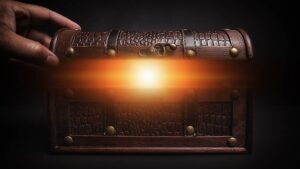Lode on starting block for antimony exploration

Lode Resources kicks off exploration at highly prospective antimony portfolio. Pic: Getty Images
- Lode Resources starts exploration at highly prospective antimony portfolio
- 19 antimony prospects identified within two of Lode’s exploration licence areas with a combined area of 1914km2
- The tenements form a strategic antimony exploration portfolio in an area of significant historical production of the critical mineral, including the Magwood mine
Special Report: Lode Resources has started exploration for one of the world’s most sought after critical metals at its newly granted exploration licence areas which include the historic Magwood antimony mine.
Magwood was Australia’s primary producer of antimony from 1941 to 1970, with recorded grades reaching up to 62% of a metal that’s become hot property on the ASX thanks to China’s decision to restrict exports of the material critical for defence industries.
Antimony prices have doubled since to a record US$24,000/t, with a US miner in Tajikistan the sole major supplier into the West outside the Chinese supply chain.
Lode’s Magwood is one of 19 antimony prospects that have been recently identified within Lode’s (ASX:LDR) 100% controlled exploration licence areas, EL9662 and EL9319.
With an area of 1021km2 EL9662 is the largest exploration area in the New England Fold Belt and sits within Lode’s new strategic antimony exploration portfolio of 1914km2.
As well as adding strategic clout to Lode’s portfolio, the area increases the company’s total exploration holdings by 66% to a total of 2949km2. This makes Lode the largest holder of exploration ground in the highly prospective New England Fold Belt.
The NSW region is still underexplored by modern mining methods but that’s about to change, with neighbours Fortescue (ASX:FMG), Newmont Corporation (ASX:NEM), as well as Larvotto Resources (ASX: LRV) and Okapi Resources (ASX:OKR) now recognising its potential.
The antimony prospects add to Lode’s Webbs Consol silver project, which has yielded close to surface bonanza grade intercepts and its Uralla gold project, where the company is boosting its understanding of the intrusive related gold system potential.

Strong potential for new mine life
Despite its decades of production, Magwood has never been drilled. Adding to the potential is the fact that across Lode’s entire antimony project area there’s been almost no historical drilling and detailed surface work is almost non-existent, even though the geology is considered very prospective for the valued metal.
Magwood’s mine grades were very high by today’s standards with historical reports indicating yearly production grades ranging from 4% to 62% antimony and total production believed to be 5000t.
Lode has now started field activities which are set to ramp up into the December Quarter and beyond. The company will release a more detailed update on its planned exploration activity in September.
Lode’s executive director – resource development Jason Beckton said: “Despite its widespread and essential use, western countries lack security in their antimony supply.
“Awareness of antimony is just beginning to grow globally, and with Australia holding the fourth largest reserves of the critical mineral, Lode is excited to hold these areas which have strong potential to play an important role in rebuilding domestic supply.”
Critical metal
One of the most important critical minerals you may not have heard much about yet, antimony is a key component of technology that powers modern economies.
But like many other critical minerals its supply is controlled by China, which has just imposed a ban on its export to kick in from September 15.
Russia comes in a very distant second in global antimony production, but its output has declined from 61,000t in 2020 to 40,000t in 2023 due to falling ore grades and more stringent environmental requirements.
The Chinese ban has spurred a run on ASX juniors with antimony prospects as the race heats up to pinpoint more of the metal in Australia, which hosts the world’s fourth largest reserves.
The main mineral of antimony is stibnite (Sb 2S 3), with antimony’s periodic table symbol being Sb. The grey metal has fire-retardant anti-corrosion properties that make it widely used in a wide range of products from paints and plastics, and it is also used in photovoltaic solar cells, wind turbines and nuclear energy facilities.
Other high-tech devices such as smartphones, semiconductors and computers depend on antimony to operate efficiently.
It’s been used in defence industries since World War II and its many modern military applications include infrared sensors, night-vision goggles and armour piercing bullets.

This article was developed in collaboration with Lode Resources, a Stockhead advertiser at the time of publishing.
This article does not constitute financial product advice. You should consider obtaining independent advice before making any financial decisions.
Related Topics
UNLOCK INSIGHTS
Discover the untold stories of emerging ASX stocks.
Daily news and expert analysis, it's free to subscribe.
By proceeding, you confirm you understand that we handle personal information in accordance with our Privacy Policy.








